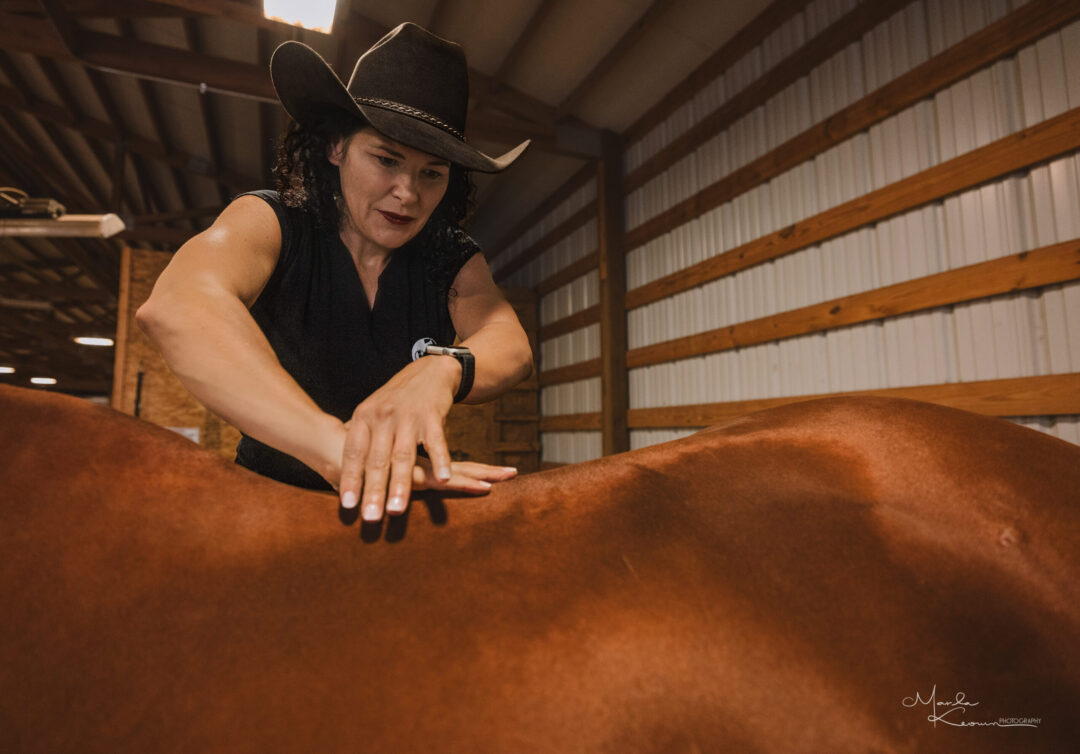Your cart is currently empty!

Horse Rehabilitation Exercises from the Ground
Dynamic mobilization, core strengthening, and balancing exercises can help stabilize the horse’s spine and the fore and hind limbs’ attachment to the body.
When a horse suffers from an injury, a diagnosis, treatment, and return to soundness hopefully follows. To make a full return to work recovery, affected horses might benefit from specific forms of rehabilitation that restore function to the back’s deep stabilizing muscles.
Hilary Clayton, BVMS, PhD, MRCVS, Dipl. ACVSMR, describes certain rehabilitation exercises that owners can perform from the ground. These are particularly useful for horses with back pain or a history of back pain and are to be used as an adjunct to ridden rehab exercises.
In her presentation Clayton described three types of core training exercises: dynamic mobilization, core strengthening, and balancing. She said these exercises’ main purpose is to help stabilize the horse’s spine and the fore- and hind limbs’ attachment to the body.
Dynamic Mobilization (aka Carrot Stretches)
These are possibly the oldest, most used exercises, both for rider and therapist. These are the most important and beneficial exercises an owner can do. The horse follows a controlled movement pattern to mobilize his intervertebral joints and, more importantly, to strengthen the muscles that move and stabilize these joints.
There are three types of exercises: neck rounding, bending, and extension:
- Rounding – Chin to chest flexes the upper neck; chin to knees and chin to fetlocks flex the lower neck and lift the back.
- Bending – Chin to girth bends the neck; chin to flank bends the neck and thoracic spine; and chin to hind fetlock bends the neck and thoracics, a portion of the lumbar spine and activates the pelvic stabilizers and abdominal muscles.
- Extension – Allow the horse to stretch his neck out as far as possible after the rounding and bending exercises as an unwinding exercise.
How to teach your horse these exercises:
Ensure your horse is standing balanced—perhaps against a wall or corner to control the haunches. Then use your bait of choice to entice the horse to flex or bend his neck, making sure it stays straight during rounding. Start with a small amount of movement, hold the position for several seconds, and repeat each exercise three to five times daily.
Dynamic mobilization exercises on young horses are important to prepare them for work under saddle; on athletic horses to improve performance and help back injuries heal; and on horses that have had colic surgery starting one month post-surgery.
Core Strengthening
Owners can perform core training exercise at the start of or before exercise to recruit the horse’s deep stabilizing muscles.
- Apply upward pressure with a slightly noxious or irritating stimulus, starting between the chest or pec muscles and slowly move back along the horse’s sternum to lift the withers and the back.
- Apply firm pressure to the top of the spine at the base of the tail and work forward until you find the horse’s “sweet spot” that causes him to round his lumbar and lumbosacral joints. Stimulate this motion by stroking down the hind quarters’ intermuscular groove, ensuring that you aren’t standing behind the horse while doing this.
Balancing
In order for a horse to balance and strengthen the muscles that connect his limbs to his body, the following exercise should be repeated three to five times daily:
- Apply pressure to the middle of the horse’s chest, causing him to rock backward. This backward weight shift activates the serratus muscles that support the chest between the forelimbs.
- Gently pull the horse’s tail to the side to activate the pelvic stabilizer muscles that help balance and stabilize the horse during collection and lateral movements.
- Lift a fore- or hind limb, and push gently on the horse’s shoulder or chest just enough to rock his weight, which activates the fore- and hind-limb stabilizers. Specifically horses and all 4 limbed animals work off a diagonal pattern, so if you lift the front left limb, the right hind limb activates to stabilize the body.
Performed regularly, these three kinds of exercises can help improve your horse’s muscle function as part of a rehabilitation program following a back injury and can also improve the horse’s athletic performance and reduce the risk of future back problems.